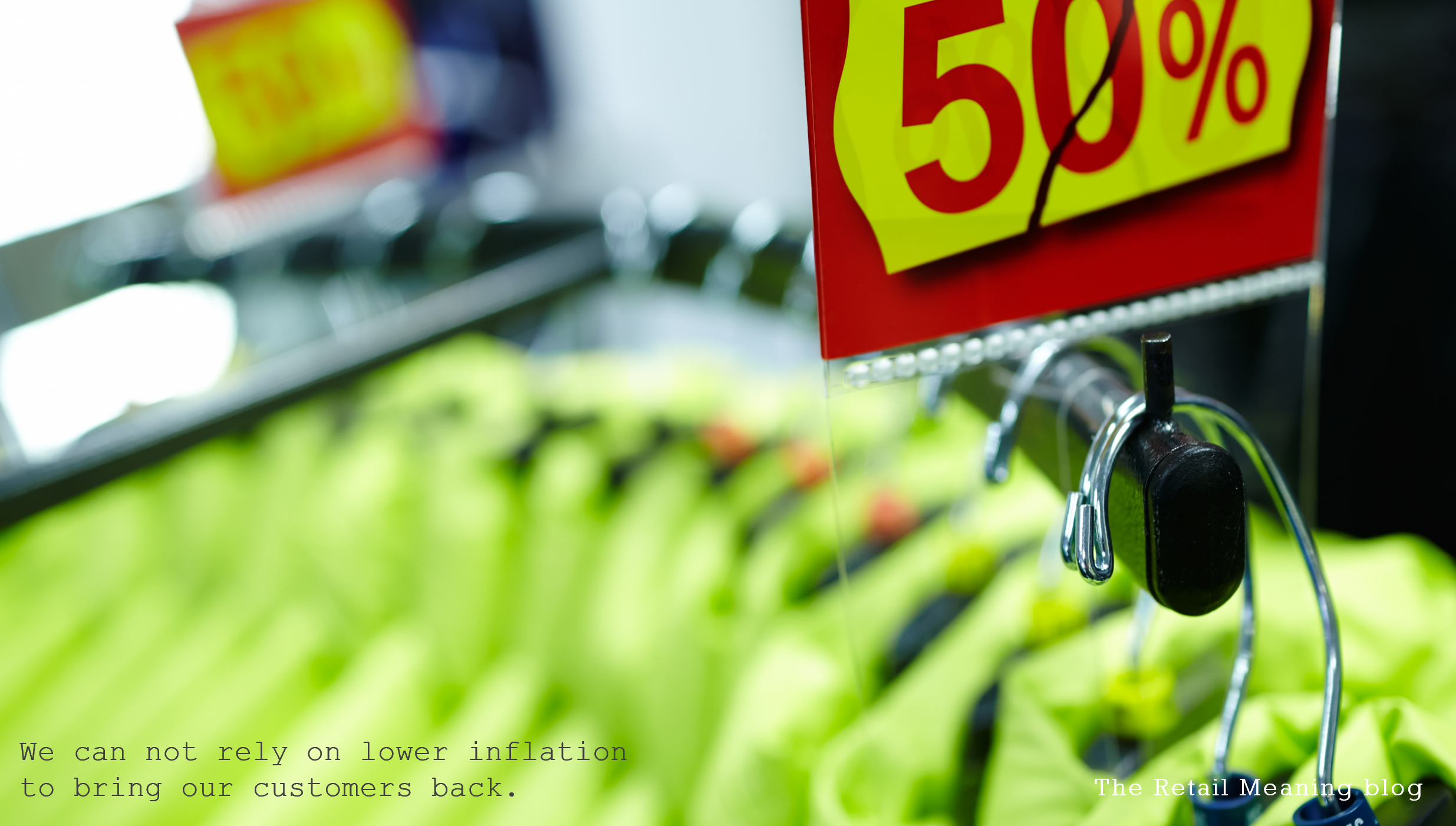Let us hope that the predictions of lower inflation and reduced interest rates have become a reality by the time you read this post. The omens are good.
In the traditional cycle of things our customers regularly go through times of financial hardship and relative freedom to spend. It is just a matter of managing our own retail businesses across our own cycles of sales and profits. When the economic sunshine finally comes out then our customers will return and begin spending more with us once again. And so, we hope again.
Of course, people with more money in their pockets is good for business. Their increased spending is good for the wider economy, however sadly this does not mean that this will automatically reflect in our own shop economics anymore. The reason, and the difference, is that we are all now operating in saturated markets.
Customers are not short of choices of where to buy. Digital commerce now means that there are more ‘retailers’ to chose from than ever before. And in the physical world the emergence of pop-ups and more flexible rental agreements means that new physical shops can appear on any high street like new shoots after the storm.
So how can we ensure that when customers are ready to spend, they spend with us? The answer is about having a unique and distinct proposition. It is about being authentic and genuine. But even then, in this world of deafening choices, it is about being noticed and appreciated. And that is about creating loyalty.
I was recently at the Retail Technology show in London and listened to speakers in the food and healthcare sector talking marketing. On the one side were voices passionate about the need to build genuine loyalty with customers, whilst others were equally enthusiastic about promotions and price reductions to drive footfall and sales.
For some the decision is a ‘no-brainer.’ Promotions work, and they work quickly. Of course, promotions lose margin, but they drive sales volume which is all important. On the other hand, building genuine and lasting loyalty takes time, and it is complicated. It requires an omni-channel approach where trust is gained through integrated actions ranging from dedicated product developments and innovations, customer-centric services, community interaction, and shop experiences based on creating quality personal time.
Building loyalty requires patience, commitment, and generosity of spirit. For some businesses and owners this is simply not an attractive option. But the dangers of a purely promotional approach are written large on every shuttered shop on the high street, and in the stories of both familiar and new brands that are increasingly closing their businesses.
Promotions can easily descend into a spiral of ever-increasing reductions, which in turn have increasingly less impact on generating sales. Margin is lost without the compensation of increased volume. If price is the only weapon you have in a fiercely competitive brand landscape, then there is only one end to these stories.
Of course, the answer is to have a combination of marketing that builds brand authenticity, integrity, and differentiation, as well as sensible promotions that drive sales.
I am reminded of a conversation with a very major healthcare retailer about the choices of promotional mechanisms from BOGOF to Mix & Match and everything in-between. My conclusion was that it is a fine line in customer perception, between promotions where the customer thinks the retailer is doing them a favour if they buy, or in fact they are doing the retailer a favour if they buy.
That is the key to successful promotions. They must be based in a wider brand story of customer appreciation, care, and a commitment to a long-term future together.
So how do customers view your promotions? As self-interested sales opportunities, or as rewards towards a long and healthy relationship. The answer will largely define whether the refreshing proposition of customers with pockets full of disposable income, will empty them into your tills, of into someone else’s.
